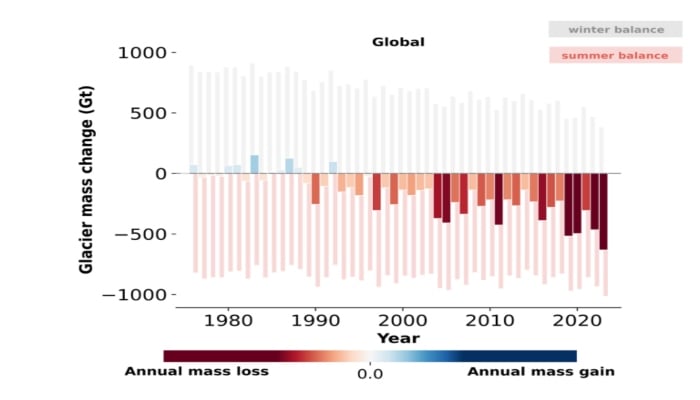- World Meteorological Organisation’s report reveals Pakistan among wetter regions in 2024, warning of escalating water extremes
- Report finds Pakistan faces climate strain, saying Indus Basin among rivers with higher discharge last year
ISLAMABAD: The global water cycle is becoming increasingly erratic, swinging between drought and flooding with severe consequences for societies and economies, the World Meteorological Organisation (WMO) warned in its State of Global Water Resources 2024 report released on Thursday.
The study found that only one-third of river basins worldwide experienced “normal” conditions last year, with the rest either above or below average—marking the sixth consecutive year of imbalance.
It also reported the third straight year of widespread glacier loss, with 450 gigatonnes of ice disappearing, raising global sea levels by 1.2 millimetres in a single year.
Pakistan among wetter-than-normal regions
While severe drought gripped the Amazon Basin, parts of South America, and southern Africa, the report noted that Pakistan experienced wetter-than-average conditions in 2024.
River discharge in the Indus Basin swelled above normal levels, alongside other major systems such as the Danube, Ganges, and Godavari, the report said.

Pakistan, already among the world’s most climate-vulnerable nations, faces twin threats of flooding and water scarcity. The country endured catastrophic floods in 2022, followed by irregular monsoon patterns, and continues to grapple with water management challenges amid rapid glacier melt in the Himalayas.
Cascading global risks
WMO Secretary-General Celeste Saulo said the world’s water resources were under “growing pressure,” with extremes becoming more damaging.
“Reliable, science-based information is more important than ever before because we cannot manage what we do not measure,” she stressed, urging greater investment in monitoring and data-sharing.

The report highlighted extensive flooding across West Africa, elevated river discharge in Central Europe and Asia, and persistent drought in key South American and African basins.
Nearly all monitored lakes recorded higher-than-normal summer surface temperatures, raising water quality concerns. Groundwater monitoring showed only 38% of wells at normal levels, with many depleted by over-extraction.

With 3.6 billion people already facing water scarcity for at least a month each year—a figure projected to rise beyond 5 billion by 2050—the WMO warned the world remains far off-track from achieving Sustainable Development Goal 6 on water and sanitation.
“The risks are escalating,” Saulo cautioned, citing the combination of El Niño-driven weather, record global heat in 2024, and accelerating glacier loss. “Without better data and collaboration, we risk flying blind.”























